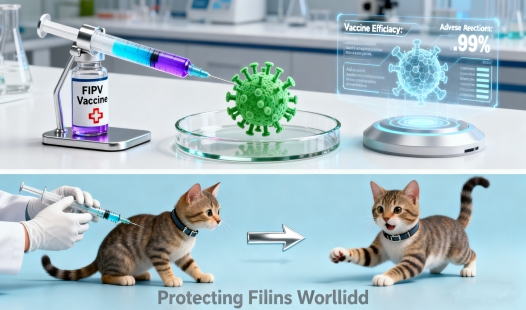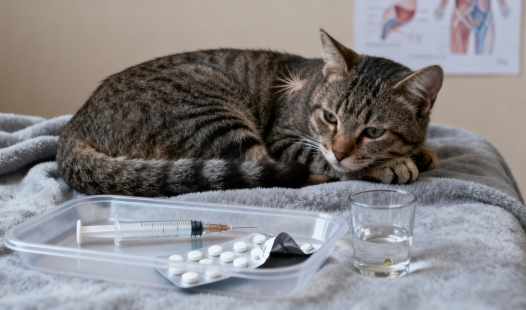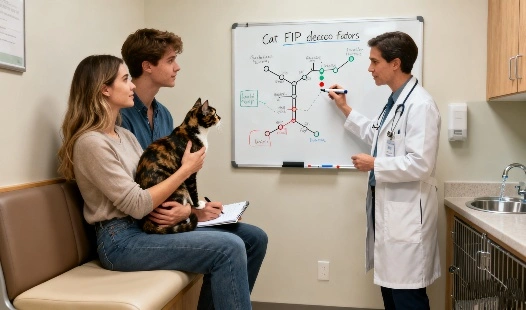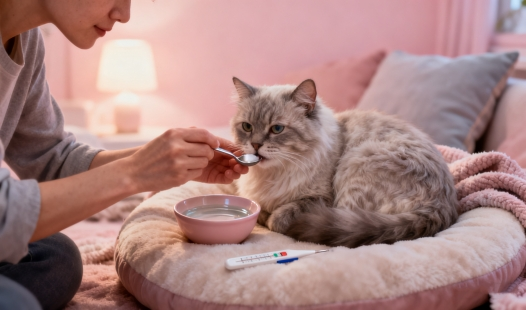How to tell if your cat’s FIP is resistant to GS-441524?
Clinical and Diagnostic Criteria for Suspected FIP Resistance to GS-441524 Injection
Feline infectious peritonitis (FIP) is a terrible disease for cats that was once thought to be deadly. But the discovery of the GS-441524 injection has changed the way FIP is treated, giving many cat owners hope. Even though it works very well, some cats may become resistant to this FIP medicine, which would make treatment more difficult. The goal of this piece is to help cat owners and vets spot signs of GS-441524 injection resistance in FIP cases and look into possible treatment options.
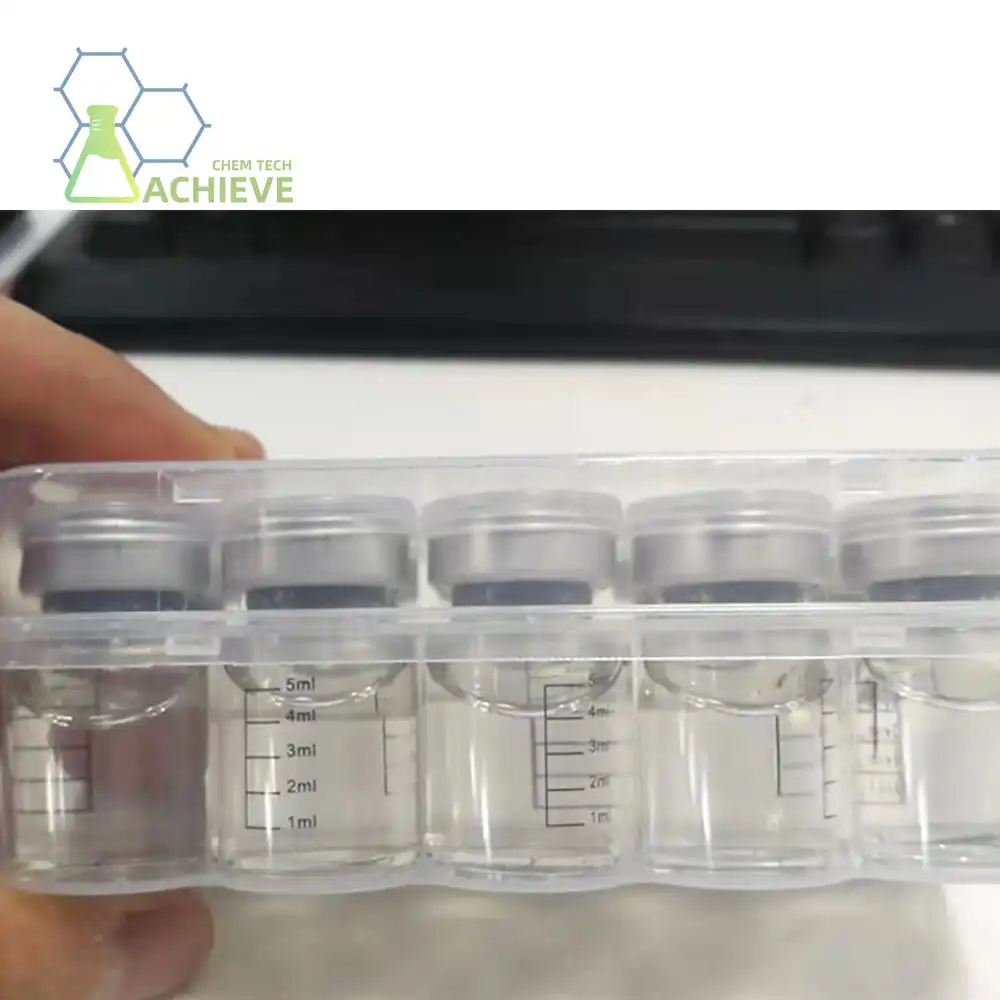

Clinical and Diagnostic Criteria for Suspected FIP Resistance to GS-441524 Injection
Recognizing potential resistance to GS-441524 injection in FIP cases requires careful observation and clinical assessment. Several key indicators may suggest that a cat's FIP is not responding adequately to treatment:
Lack of Clinical Improvement
One of the primary signs of potential resistance is a lack of significant clinical improvement after starting GS-441524 therapy. Typically, cats with FIP show noticeable improvements in appetite, activity levels, and overall demeanor within 24-72 hours. If your cat fails to exhibit these positive changes after several days, it could indicate that the treatment is not effective.
Persistent or Worsening Symptoms
FIP-resistant cats may continue to experience symptoms like fever, weight loss, lethargy, or effusion (fluid buildup) even with ongoing treatment. In some cases, these symptoms may become more severe, indicating that the treatment is not achieving the desired effect.
Abnormal Blood Work Results
Regular blood tests are crucial for monitoring progress. If key parameters such as hematocrit, albumin, globulin, and inflammatory markers continue to show abnormal values, this could suggest that the cat is not responding to the GS-441524 injection as expected.
Ineffective Dose Escalation
Veterinarians often increase the dosage of GS-441524 if the initial treatment doesn't show sufficient results. However, if symptoms persist or worsen even after dose escalation, this could be a clear sign of resistance to the medication. In such cases, further treatment strategies or a different approach may be required.
Mechanisms of Viral Resistance and Treatment Failure with GS-441524 Injection
Understanding the mechanisms behind FIP virus resistance to GS-441524 is crucial for developing effective treatment strategies. Several factors can contribute to treatment failure:
Like many RNA viruses, the FIP virus has the ability to mutate rapidly. Some of these mutations may occur in the genes responsible for viral replication or in the viral proteins that GS-441524 targets. Such mutations can allow the virus to evade the antiviral effects of the drug, leading to treatment resistance. This variability in the virus makes it more challenging to develop a one-size-fits-all treatment approach.
In some cases, GS-441524 injection may not reach sufficient concentrations in certain tissues, such as the central nervous system or other deep tissues. These areas can become "sanctuary sites" where the virus remains protected, allowing it to persist and potentially develop resistance despite treatment.
Individual variations in a cat's immune response or how its body metabolizes the drug can impact the success of treatment. Certain cats may have genetic or physiological factors that make them more likely to develop resistance, even when the drug is administered correctly. The presence of other underlying health conditions may also compromise the effectiveness of the treatment.
In some cases, what appears to be drug resistance may actually be a misdiagnosis of FIP or the presence of other concurrent diseases. These conditions can mimic the symptoms of FIP or interfere with the body's ability to respond to the treatment, leading to a perceived failure of the GS-441524 injection when, in fact, another issue may be at play. Proper diagnosis and careful assessment of the overall health condition are crucial in these cases.
Differentiating Between True Resistance and Other Causes of Poor Response to GS-441524 Injection
Distinguishing true GS-441524 resistance from other factors affecting treatment response is crucial for appropriate clinical management. Several considerations can help in this differentiation:
Adherence to Treatment Protocol
One of the first factors to consider is whether the prescribed treatment regimen is being followed precisely. Inconsistent dosing, missed doses, or improper administration techniques can all mimic signs of resistance, even when the drug is still effective. Ensuring that the treatment schedule is strictly adhered to and that the medication is administered correctly can help rule out these potential issues.
Drug Quality and Storage
It is also important to verify the source and quality of the GS-441524 injection being used. If the medication has been improperly stored or if counterfeit products are involved, this can lead to treatment failure that might appear as resistance. Ensuring that the drug is stored correctly and sourced from a reputable manufacturer is essential to achieving the desired treatment outcomes.
Concurrent Health Issues
Finally, it's important to evaluate the cat for any underlying health conditions that may affect the response to treatment. Diseases such as liver or kidney dysfunction, infections, or immune system issues could complicate the effects of GS-441524 injection. By addressing these concurrent health problems, overall treatment effectiveness can improve, and the appearance of resistance may be reduced. Proper diagnosis and management of these issues are crucial for achieving a positive response.
Advanced Diagnostic Testing for Confirming Resistance to GS-441524 Injection
When resistance is suspected, advanced diagnostic testing can provide valuable insights:

Viral Load Monitoring
Quantitative PCR testing to measure the FIP viral load is an important tool for assessing treatment efficacy. By comparing viral loads before and after treatment, veterinarians can determine whether the viral count is decreasing as expected. If the viral load persists or increases despite ongoing therapy, it may indicate that the virus is resistant to GS-441524 injection, suggesting the need for a change in treatment strategy.
Genetic Sequencing
Genetic sequencing of the FIP virus can be an invaluable tool in identifying specific mutations associated with resistance. By analyzing the virus's genetic makeup before and during treatment, it is possible to pinpoint any mutations in the genes responsible for replication or those targeted by the drug. These mutations can directly contribute to resistance, allowing for a more targeted approach in future treatments.


Therapeutic Drug Monitoring
Measuring the concentration of GS-441524 in the blood and cerebrospinal fluid is another useful method to ensure that adequate drug levels are being achieved. Subtherapeutic drug concentrations in these critical areas, particularly in the central nervous system, could prevent the drug from being fully effective. Regular monitoring of drug levels can help confirm whether the proper dosage is being administered and whether adjustments are necessary to achieve the desired therapeutic effect.
Clinical Management Options for Cats with GS-441524 Injection-Resistant FIP
When resistance to GS-441524 injection is confirmed, several management options may be considered:
Alternative Antiviral Agents
If GS-441524 injection proves ineffective, exploring alternative antiviral compounds may be necessary. For instance, GC376, a protease inhibitor, has shown promise in treating FIP and may offer a viable treatment option for cases resistant to GS-441524. The use of different antiviral agents can help target the virus through different mechanisms, which may improve efficacy in resistant cases.
Combination Therapy
In some cases, combining GS-441524 with other antiviral agents or immunomodulatory drugs may be an effective strategy. Combination therapy can work synergistically to overcome resistance by targeting multiple aspects of the virus's replication process. Additionally, the use of immunomodulatory drugs can help strengthen the cat's immune response, potentially enhancing the effectiveness of the antiviral therapy.
Supportive Care
While addressing the resistance itself is important, providing comprehensive supportive care remains a critical component of treatment. Supportive care includes administering fluids to prevent dehydration, providing nutritional support to maintain strength, and managing specific symptoms such as fever, effusion, or pain. Proper supportive care can help improve the cat's overall condition and quality of life while other treatment options are explored.
Conclusion
Recognizing and addressing potential resistance to GS-441524 injection in FIP cases is crucial for optimizing treatment outcomes. While resistance poses significant challenges, ongoing research and clinical experience continue to expand our understanding and management options for this complex disease. Close collaboration between cat owners and veterinarians, along with careful monitoring and advanced diagnostic testing when necessary, can help navigate the complexities of FIP treatment and improve the chances of successful outcomes.
FAQ
1. How common is resistance to GS-441524 in FIP cases?
Resistance to GS-441524 is relatively uncommon, occurring in approximately 10-15% of treated cases. However, the exact prevalence may vary depending on factors such as disease stage and treatment protocol.
2. Can resistance to GS-441524 develop during treatment?
Yes, resistance can develop during the course of treatment, particularly in cases with prolonged therapy or suboptimal dosing. Regular monitoring is essential to detect early signs of resistance.
3. Are there any specific FIP forms more prone to GS-441524 resistance?
Neurological FIP cases tend to have a higher risk of developing resistance, possibly due to the challenges of achieving adequate drug concentrations in the central nervous system.
 |
 |
Partner with BLOOM TECH for Premium GS-441524 + Manufacturer
We know how important high-quality fip medication is for FIP treatment here at BLOOM TECH. Our cutting-edge production methods and strict quality control make sure that the GS-441524 we sell is always pure and effective. We have over ten years of experience in chemical synthesis and pharmaceutical intermediates, which means we can help you in any way. As a trusted GS-441524 manufacturer, when you choose BLOOM TECH for your fip medication needs, you'll get our dedication to excellence, low prices, and helpful customer service. Contact us today at Sales@bloomtechz.com to learn how we can support your FIP treatment goals.
References
1. Pedersen, N.C., et al. (2019). Efficacy and safety of the nucleoside analog GS-441524 for treatment of cats with naturally occurring feline infectious peritonitis. Journal of Feline Medicine and Surgery, 21(4), 271-281.
2. Kim, Y., et al. (2020). Reversal of the Progression of Fatal Coronavirus Infection in Cats by a Broad-Spectrum Coronavirus Protease Inhibitor. PLOS Pathogens, 16(3), e1008259.
3. Addie, D.D., et al. (2020). Feline infectious peritonitis. ABCD guidelines on prevention and management. Journal of Feline Medicine and Surgery, 22(11), 1028-1048.
4. Dickinson, P.J., et al. (2020). Antiviral treatment of feline infectious peritonitis using the nucleoside analog GS-441524. Animals, 10(12), 2378.

Echo
9 years of experience in chemical articles; Doctoral degree; Organic Chemistry major; R&D-4 Dept; Technology support; R&D engineer
Anticipating your Business & Technology support inquiry
Please send us the products that interest you, and we will provide you with one-on-one service
Recommended Blog

Life After FIP: Long-Term Care for Your Cat Post-GS-441524 Treatment



